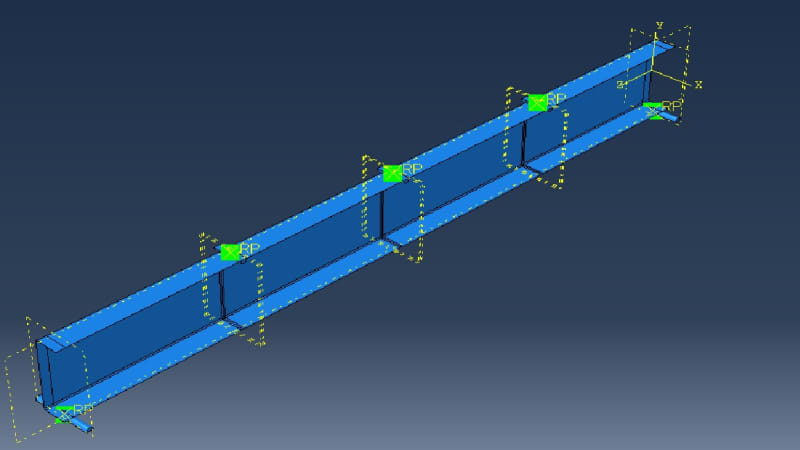09Hello,
I am using the Abaqus explicit solver to conduct a post-buckling analysis of a cold-formed steel U section.
The support and the loading points are made of 3D discrete rigid solid elements. The supports and the loading is applied through a reference point attached to the rigid body.
When I submitted the data check, an error message appeared that a mass and rotary inertia must be applied to the reference node attached to the rigid body reference point.
I applied a nominal mass and rotary inertia, both of magnitude 1E-09.
The error was removed.
My query is
Are the magnitude of the mass and rotary inertia have to be exact? Or such a nominal value (e.g., 1E-09)application is OK?
Could you please advise?
I am using the Abaqus explicit solver to conduct a post-buckling analysis of a cold-formed steel U section.
The support and the loading points are made of 3D discrete rigid solid elements. The supports and the loading is applied through a reference point attached to the rigid body.
When I submitted the data check, an error message appeared that a mass and rotary inertia must be applied to the reference node attached to the rigid body reference point.
I applied a nominal mass and rotary inertia, both of magnitude 1E-09.
The error was removed.
My query is
Are the magnitude of the mass and rotary inertia have to be exact? Or such a nominal value (e.g., 1E-09)application is OK?
Could you please advise?

